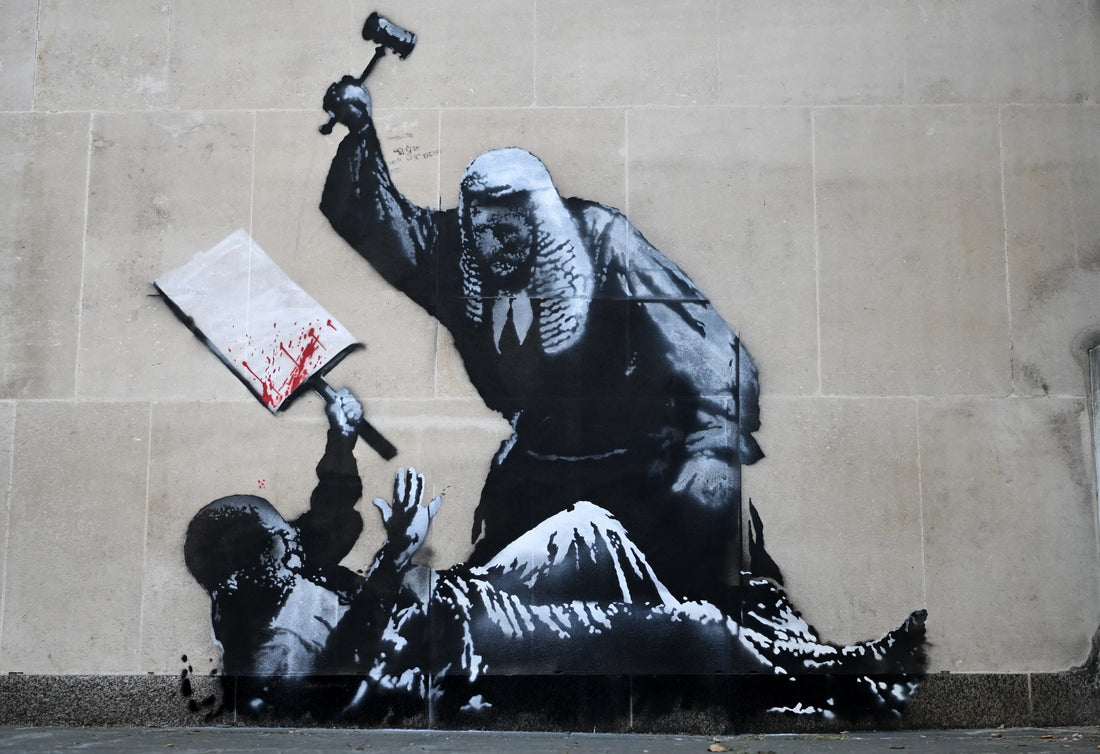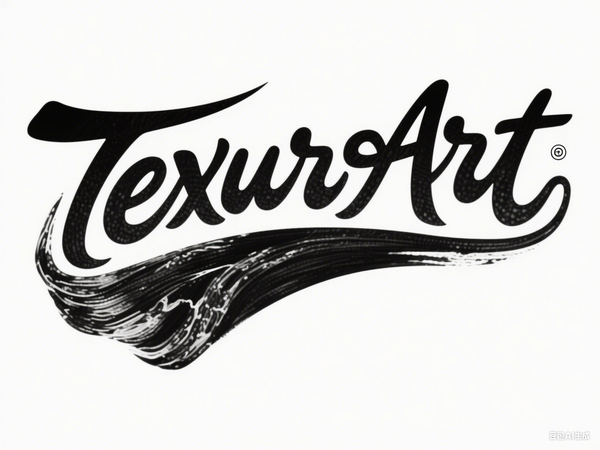
Banksy’s Controversial Royal Courts of Justice Mural - Art, Protest, and the Fight Over Free Expression
Share
In early September 2025, renowned anonymous street artist Banksy unveiled a poignant and provocative mural on the exterior wall of the Royal Courts of Justice in London. The artwork depicted a judge, wearing a traditional wig and black robe, striking a protester lying on the ground with a gavel. The protester’s placard was splattered with red, reminiscent of blood, making a powerful and immediate visual statement. Though Banksy did not explicitly label the mural as connected to any specific political event, the piece rapidly became associated with the recent crackdown on pro-Palestinian protests in the UK, particularly the banning of the activist group Palestine Action.

The Artwork and Its Context
Banksy confirmed authorship of the mural by posting images on his official Instagram account with the caption “Royal Courts of Justice. London.” The mural emerged on the historic 143-year-old Queen’s Building, part of the Royal Courts complex on Carey Street, a listed Victorian Gothic Revival structure protected by heritage laws.
The image of a judge—institutional authority itself—violently silencing a protestor resonated in a moment when nearly 900 activists were arrested during demonstrations over Palestine Action, declared a terrorist group by the UK government earlier that year. The protestors opposed the banning and signaling deep concerns over the right to peaceful protest and freedom of expression.
Critics and human rights advocates quickly interpreted Banksy’s mural as a powerful condemnation of what they saw as governmental overreach and repression of dissent. Amnesty International and other organizations have urged caution over the legal classification of activist groups, warning it could chill democratic rights.
Rapid Removal and Public Reaction
Within hours, security personnel covered the mural with large sheets of plastic and metal barriers, restricting public view but fueling a surge of interest and photo-sharing on social media. The appearance transformed the usually quiet street into a buzzing spectacle of onlookers capturing the fleeting artwork.
By September 10, reports surfaced of the mural being scrubbed clean by masked workers while police officers stood by. Authorities cited the Grade II listing of the Royal Courts of Justice building, which legally requires preservation of its original character, as justification for removal.
The Ministry of Justice confirmed the removal was mandated and classified the mural as criminal damage. The Metropolitan Police also announced they were investigating the incident.
This erasure ignited a flurry of online commentary and protests. Supporters accused the state of censoring an artwork that embodied the very concept of protest and free speech. The Good Law Project even posted images of the removal, commenting, “Silencing a piece of art about silencing protest? Perhaps it hit a bit too close to home.”
Banksy’s Continued Legacy of Political Critique
Banksy has long been a provocateur using public spaces to expose social injustices and political hypocrisy. From his artworks on the Israeli West Bank separation wall to cryptic installations critiquing capitalism and war, Banksy’s visual language is powerful yet uncluttered, inviting broad interpretation.
The Royal Courts mural is consistent with his history of engaging controversial subjects through striking imagery, this time focusing on judicial authority and protest suppression within a global democracy.
Balancing Preservation with Public Art
The removal also sparked debate over the balance between conserving heritage sites and recognizing the cultural significance of guerrilla street art. While heritage laws protect historic architecture, many argue that ephemeral public artworks like Banksy’s contribute to vital contemporary cultural dialogues.
Image Sources
-
Banksy’s original mural on the Royal Courts of Justice exterior, as posted on Banksy’s Instagram.
-
The Royal Courts of Justice building façade, photo courtesy of BBC News article.
-
Images of the mural being covered and scrubbed from The Guardian and BBC coverage, alongside social media documentation by the Good Law Project.
FAQ About Banksy’s Royal Courts of Justice Mural
Q: What did Banksy’s Royal Courts mural depict?
A: It showed a judge in traditional attire striking a protester lying on the ground with a gavel, the protester’s placard splattered with red, suggesting blood.
Q: Why was the mural controversial?
A: The artwork symbolically critiqued the UK government’s crackdown on pro-Palestinian activists and raised issues around freedom of speech and protest rights.
Q: Was the mural officially authorized?
A: No, it was an unauthorized street artwork. Authorities reported it as criminal damage due to being painted on a listed historic building.
Q: Why was the mural removed so quickly?
A: The Royal Courts of Justice, a listed building, legally requires preservation of its original character. Officials removed the mural to comply with heritage protection laws.
Q: How did the public react to the removal?
A: The removal sparked significant backlash, with critics viewing it as censorship and suppression of political expression.
Q: Has Banksy created similar politically charged works before?
A: Yes, Banksy is known for provocative street art addressing war, social injustice, capitalism, and political oppression, including works on the Israeli separation wall.
Q: Are there legal consequences for Banksy regarding this mural?
A: The Metropolitan Police opened an investigation for criminal damage. Given Banksy’s anonymity, enforcement is challenging but possible legal proceedings may require disclosure of identity.
Banksy’s Royal Courts of Justice mural embodied the tensions between authority and dissent, art and law, permanence and ephemerality. Though physically erased, its powerful message and the debate it sparked continue to reverberate within discussions about free expression in democratic societies.
